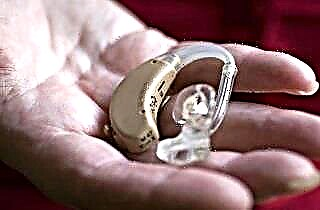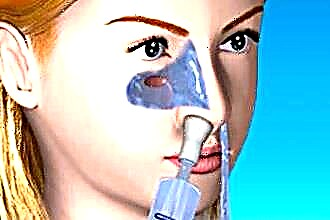Purulent otitis media is an inflammatory process that is localized in the middle ear cavity and is accompanied by suppuration of the mucous membrane. Purulent otitis media very often develops in children. This is explained by the structural features of the Eustachian tube, it is shorter and wider, which facilitates the penetration of pathogenic microflora.
Purulent otitis media in a child is most often the result of improper treatment of the exudative form of the disorder. In addition, hypothermia, lack of vitamins and minerals, dysfunction of the immune system, uncontrolled intake of antibiotics can provoke the transition of the pathological process to a more severe form. Also, purulent otitis media in a child is often the result of colds and viral diseases.
Symptoms

Symptoms of purulent otitis media in an infant are as follows:
- increased anxiety, tearfulness;
- refusal to breast or bottle of formula;
- nausea, gag reflexes;
- in the process of feeding, the baby constantly turns his head;
- the child tends to roll over on its side from the side of the sore ear.
Such symptoms may indicate other diseases as well. Therefore, the presence of at least one of the above signs is a reason for an immediate appeal to a pediatrician.
The easiest way to identify purulent otitis media in a child 2 years of age and older. Because at this age, children can already talk about painful sensations in the ear area. The following symptoms also occur:
- weakness;
- fatigue;
- pronounced pallor of the skin;
- ear congestion;
- hearing impairment;
- seepage of purulent masses from the auricle;
- increase in temperature values up to 38-40 ºС.
In case of rupture of the tympanic membrane, a mucopurulent substance comes out of the ear cavity. In such a situation, the child needs emergency medical care.
Next, let's talk about how to treat purulent otitis media in children.
Principles of therapy
In the case of the development of a purulent form of otitis media in childhood, self-medication is strictly prohibited. Improper implementation of therapeutic measures can provoke the transition of the violation to the chronic stage.
The specialist draws up a treatment program individually, depending on the stage of the pathological process. If pus does not spread beyond the ear canal, treatment of purulent otitis media in a child at home is acceptable.
In severe cases of the disease, urgent hospitalization is required. In stationary conditions, the tympanic membrane is dissected and the ear cavity is cleared of purulent masses.
Home treatment of purulent otitis media in children includes the use of the following remedies:
- ear drops that have a disinfecting effect and relieve acute pain.
- medicines for internal use that have analgesic effects, such as Paracetamol. The dosage is determined by a specialist, taking into account the age and weight of the child.
- nasal drops, aimed at eliminating the swelling of the Eustachian tube and promoting a more active rejection of purulent masses.
- antibiotics (syrups, suspensions, tablets) that suppress the activity of infectious agents.
In addition to using medications, it is important to regularly cleanse the outer ear cavity from accumulating purulent masses.
For this purpose, hydrogen peroxide is used. Then the ear cavity is gently dried using a cotton swab. After the completion of the cleansing procedure, antibacterial drops are instilled into the ear canal. This manipulation is performed 3 times a day.
Under the condition of adequate and timely therapy, a small scar is formed on the tympanic membrane, a stable remission is achieved, and hearing is fully restored. But for various reasons (accession of a secondary infection, incomplete treatment of the inflammatory process, too rapid healing of the tympanic membrane), a relapse of the disease is possible a few days after the release of purulent masses.
To prevent the recurrence of pathology in a hospital, shunting is performed - in a micro-tube is inserted into the opening of the tympanic membrane, which prevents the membrane from healing and allows the ear cavity to be cleaned and injected.
a micro-tube is inserted into the opening of the tympanic membrane, which prevents the membrane from healing and allows the ear cavity to be cleaned and injected.
If bilateral otitis media occurs in a child, urgent hospitalization is required. Treatment in this case is carried out in the same way as in a unilateral inflammatory process, but under the constant supervision of qualified specialists.
After the cessation of suppuration, the use of antibacterial agents is canceled, but therapeutic measures aimed at improving nasal breathing and restoring the function of the Eustachian tube are continued. A good healing effect is provided by such procedures as:
- physiotherapy warming up;
- laser therapy;
- blowing.
At normal temperatures, the use of a warming compress is indicated, which will promote tissue regeneration.
Additional recommendations
During the treatment of the disease, it is not recommended to bathe the child; wipes with a damp towel should be carried out. The baby's ears should be kept warm and a light cap should be worn.
Walking on the street is allowed only with a noticeable improvement in condition.
It is important to ensure that the baby is getting enough fluid. This will improve the patient's overall well-being and speed up the healing process.
Possible complications
Purulent masses, accumulating in the tympanic cavity, are able to partially penetrate into the inner ear cavity. This can provoke serous inflammation in this area, the pathological process can turn into a purulent form and lead not only to complete hearing loss, but also to disorders of the vestibular apparatus.
A fairly common complication of purulent otitis media is cholesteatoma - a neoplasm that releases toxic substances into the surrounding space and has a destructive effect on closely located bone tissue. Such a pathology occurs when the curvature of the eardrum is disturbed.
 The development of mastoiditis is also possible. In this disease, bacterial elements penetrate the porous bone located behind the auricle, as a result of which the bones are filled with purulent masses.
The development of mastoiditis is also possible. In this disease, bacterial elements penetrate the porous bone located behind the auricle, as a result of which the bones are filled with purulent masses.
Improper treatment of otitis media can provoke the transition of the disease into a chronic form. Despite the fact that in childhood this happens in rare cases, therapy for acute purulent otitis media should be timely and adequate.
Preventive measures
To prevent the development of otitis media, it is important to strengthen the body's defenses and provide timely treatment for colds and viral diseases.
The hygiene of the ear cavity is of great importance. The abundant accumulation of sulfur in the ear canal is a favorable environment for the reproduction of pathogenic microorganisms and, as a result, the development of the inflammatory process. Regular hygiene and cleansing of this area will help avoid these problems.



